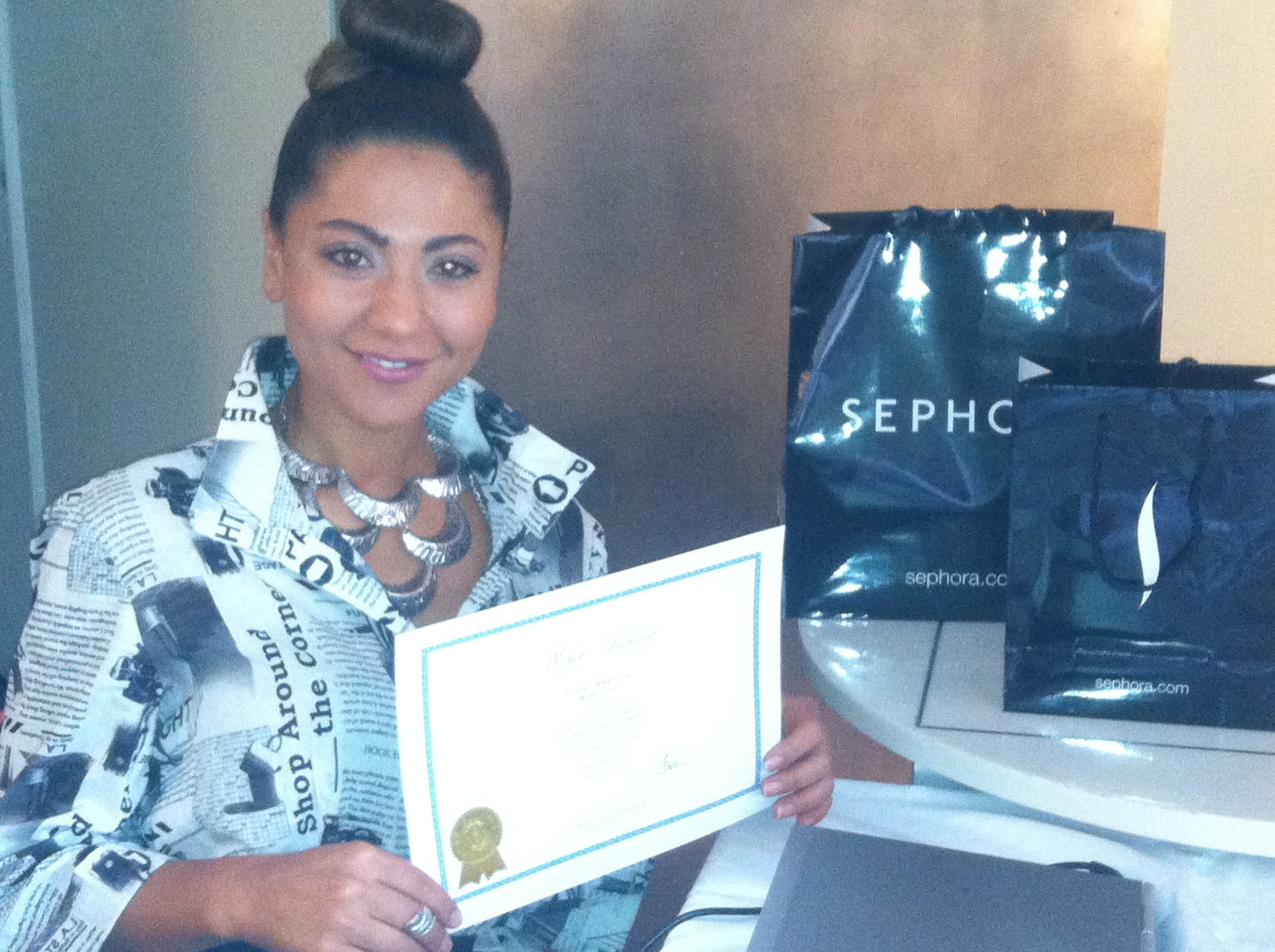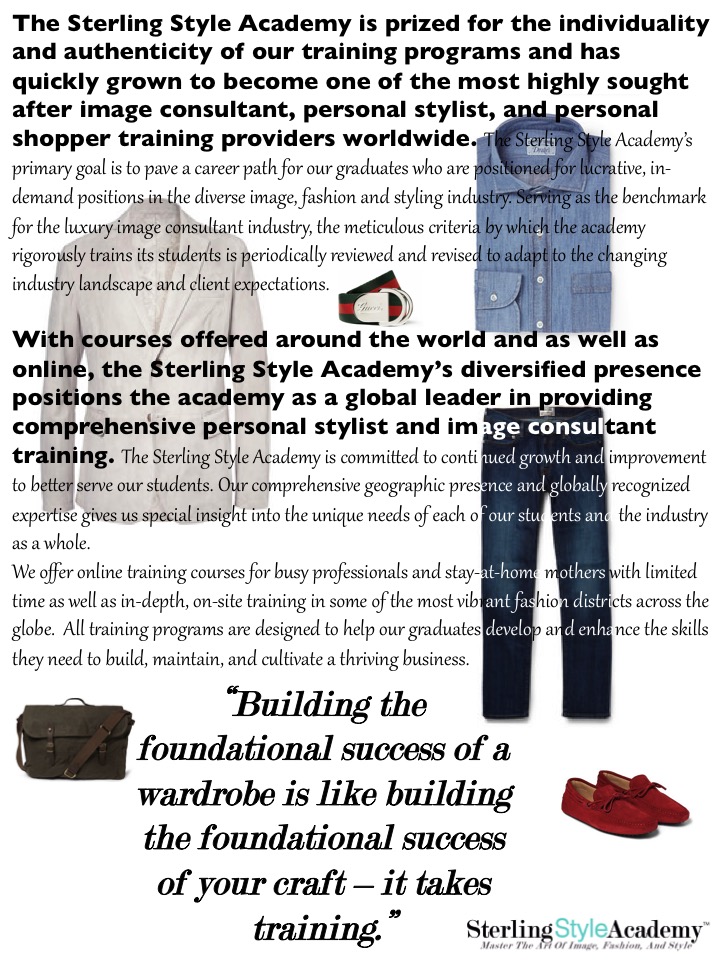Image Consultant and Company Brand Image Specialist, Michelle T. Sterling, Founder and Training Director of Sterling Style Academy, discusses the importance of developing a strong company brand identity by using the power of the Tory Burch brand as an example. In just 6 years, Tory Burch has developed a strong brand image and company brand identity which is the foundation to developing any successful business. If you are thinking about becoming an image consultant, personal shopper, or personal stylist, developing a strong company brand image and identity will be the key to your success and the Sterling Style Academy is here to provide you with the tools to set you up for success with our Sales, Marketing, and Business Brand Identity Launch Kit. For more information, please click here.
Tory Burch Fashioned a Business Model First
By TERI AGINS, February 5, 2008
When Tory Burch’s Reva shoe took off last year, it looked like the latest accessory fad to come out of the blue.
Sales of the distinctive $195 ballet slipper with a double-T logo on a brass-plated buckle exceeded retailers’ expectations, at more than 250,000 pairs in more than a dozen shades since it appeared on store shelves in 2006.
Designer Tory Burch gives fashion columnist Teri Agins a sneak peak of her fall collection. The line incorporates quilting, corduroy and motorcycle jackets.
But the Reva’s success was no fluke. It was part of the 41-year-old Ms. Burch’s carefully choreographed brand-building effort. With a business plan more in line with strategy in the packaged-goods industry than the design world, Ms. Burch is redefining how to run a fashion business today. After four years in business, the company’s annual sales are estimated at about $115 million.
Ms. Burch, a New York socialite and a mother of three boys, had no design experience when she launched her company with her husband, venture-capitalist Christopher Burch, though she had worked in public relations and marketing for designers Ralph Lauren, Vera Wang and Narciso Rodriguez. Her own wardrobe was a mix of designer and vintage fashions and mall brands such as J.Crew, and she realized that there weren’t many choices when it came to casual, fun clothes that didn’t cost a lot.
Most fledgling designers try to make their names as creative innovators in the top-tier world of $2,500 ensembles, where competition is steep and overhead for design studios, fashion shows and advertising is high. But the Burches, who are divorcing but plan to remain co-chairmen of the company, set out to launch a full-blown retail concept in the more lucrative and accessible mid-price sector known as contemporary fashion. Tory Burch tunics and dresses sell for $250 to $400, shoes for $195 to $350 and handbags for $400 to $600.
Ms. Burch shows the line to retailers at informal presentations like the one Ms. Burch will stage for her fall collection today during New York’s fashion week. Though models show the clothes, this presentation costs $30,000 or so, compared with $250,000 or more for a runway show.
![[Photo]](http://si.wsj.net/public/resources/images/MK-AO059_TORY_20080204200733.jpg)
Their approach to the Reva ballet slipper is an example of the broader strategy the Burches have used to build the brand. Ms. Burch didn’t invent the shoe. Instead, she took note of the popularity of $300 ballet flats introduced by designers such as Marc Jacobs. But rather than compete head-on with them, she and her husband set out to build a highly commercial shoe that would sell at a lower price.
They formed a joint venture with Vince Camuto, a co-founder of Nine West, who enlisted his Brazilian factories to make a high-quality, affordable shoe. His creative director helped design a shoe that was sleek and low-cut, but had a sturdy shank for support and a flexible rubber sole for comfort. Elastic in the heel area made the shoes fit snugly without gaping.
“We wanted a practical shoe, a sexy ballet shoe with our logo — which we knew would sell,” says Ms. Burch, who named the style after her mother Reva.
Unlike many other fashion houses, the Burches didn’t license out the business. “We don’t believe in licensing because we feel very strongly that we want to control the brand,” Mr. Burch said in his first interview about the company.
The latest fashion news, images, analysis and perspective from New York’s fashion week.
To start the business in 2004, the Burches invested $2 million of their own money. The initial capital bought a lease for a 1,900-square-foot boutique in lower Manhattan and a first shipment of products to fill it.
The first prototypes were cooked up in the living room of the Burches’ Manhattan apartment. Mr. Burch interviewed many of the initial employees and, through a referral, found designer Stephanie von Watzdorf, who became their vice president of design.
With the objective of controlling distribution with her own stores and on a Web site, Ms. Burch came out of the gate with 15 product categories — an unusually broad array for a new fashion brand. Offerings included shoes, umbrellas, swimwear, beach towels, handbags, tops, bottoms, skirts and dresses. The style was based on Ms. Burch’s vision of the casual elegance of the 1960s or 1970s, a time when her parents vacationed in Greece and Morocco. She hired a firm to create the T logo, which she put on as many products as possible.
Through business connections, the Burches found five Hong Kong factories to make the initial products — about 50 units of each. “Our first orders were so small, and we had to beg — and sometimes pay premiums to get factory space,” says Mr. Burch, who had learned about manufacturing by running a family-owned sweater business.
Ms. Burch invited fashion editors, retailers and socialite friends to her store opening in February 2004. The place was filled with clothes featuring bold prints, embroidered details and buttons, and shoes and handbags. Almost everything sold the first day.
Tory Burch tunics caught on, partly because they flatter women of many ages and body types. Ms. Burch used a printed polyester tunic she had bought in a Paris flea market as the template for a line she made in silk prints decorated with embroidery and crystals. Oprah Winfrey featured the tunic on the “Favorite Things” segment of her talkshow in 2005, triggering thousands of orders on the Ms. Burch’s Web site.
“Tory saw that there was a niche in the market for great fashion that is practical and easy to wear at respectable prices,” says Ron Frasch, vice chairman and chief merchant at Saks Fifth Avenue.
However, like others in the fickle fashion business, Ms. Burch faces challenges. “She has to stay on top of the game season after season, and that’s the most difficult part,” Mr. Frasch says. Keeping the company’s successful team together and dealing with the prospect of new competition are other key factors, he says.
Among Tory Burch’s competitors now are contemporary brands such as Nanette Lepore, Diane von Furstenberg and Theory.
With wide exposure, including 12 boutiques of their own in the U.S., the Burches don’t think they need to advertise. Ms. Burch has become a powerful billboard for the brand, appearing on the Martha Stewart TV show and on the cover of Town & Country magazine last year.
The company has grown to 150 employees, including those who work in the stores. Despite the slowdown in consumer spending, the company is sticking with expansion plans that call for opening six more boutiques in the U.S. this year and a sales office in Milan to service its growing roster of international wholesale customers. Up next is a fragrance, which Ms. Burch says the company will probably produce as its first license, making an exception for a product that is difficult to make in-house.
The Burches say their business isn’t for sale, though they talk informally with investors from time to time. As the company grows, it faces new issues. “We want to take care not to over-distribute because our customer doesn’t want to see herself coming and going,” says Ms. Burch.
Write to Teri Agins at teri.agins@wsj.com

Your Online Personal Shopper + Stylist



Leave a Reply
You must be logged in to post a comment.